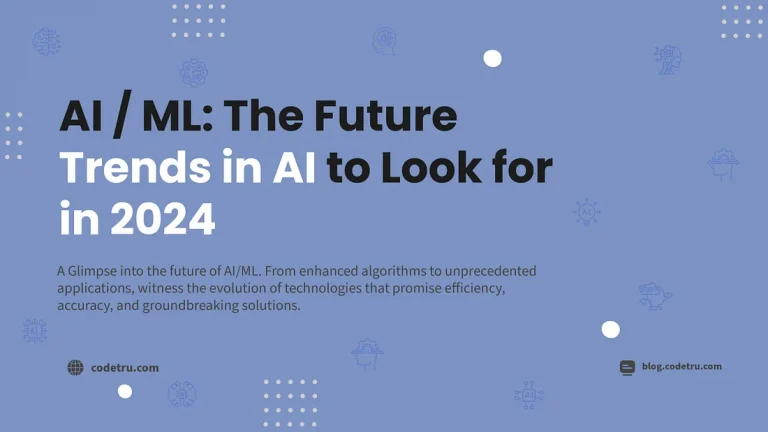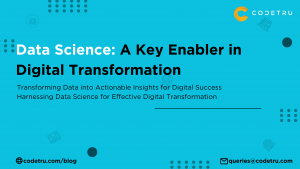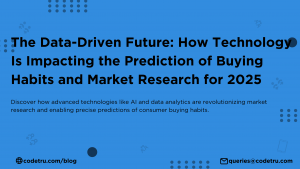Artificial intelligence (AI) and machine learning (ML) are two of the most exciting and influential fields of technology today. They have the potential to transform various industries and domains, from healthcare and education to entertainment and security.
With, AI and ML are also evolving rapidly, with new developments and innovations emerging faster than new movies. Therefore, it is important for anyone interested in these fields to stay updated with the latest trends and applications of AI and ML.
Let’s explore some of the trends in AI ML that are shaping the future based on the current research and predictions of experts.
Key Trends in AI ML in 2024
1. Federated Learning
Federated learning, an AI powered groundbreaking approach, transforms machine learning model training while prioritizing data privacy and security. Unlike traditional methods that centralize data in a cloud server, federated learning keeps data on local devices or servers, exchanging and aggregating only model parameters. This collaborative process enables multiple parties to learn from each other’s data without compromising raw data or violating regulations.
With applications spanning natural language processing, federated learning proves instrumental in enhancing the accuracy and efficiency of AI models. Additionally, it reduces communication and computation costs while facilitating continual and personalized learning. This innovative paradigm aligns with the evolving landscape of AI, ensuring advancements with privacy and collaboration at the forefront.
2. Ethical and Inclusive AI
One of the most important and challenging aspects of AI is ensuring that it is ethical and inclusive, which means that it respects and promotes the values, rights, and interests of all stakeholders and that it is fair, transparent, and accountable. Some of the issues and initiatives related to ethical and inclusive AI are:
- Countering Proliferating Deepfakes: Deepfakes are synthetic media, such as images, videos, or audio, that are created or manipulated by using generative AI, and that can impersonate or deceive people, such as celebrities, politicians, or ordinary citizens. Deepfakes can pose serious threats, such as spreading misinformation, damaging reputations, or influencing elections. Therefore, there is a need to counter the proliferation of deepfakes, by using techniques such as digital watermarking, blockchain, or AI detection, as well as raising awareness, educating users, and enforcing regulations.
- Introducing more LLMs to include Regional Languages: LLMs can offer various benefits but they also face several challenges, such as ensuring the quality, diversity, and representation of the data, as well as the language, culture, and context of the users. Therefore, there is a need to introduce more LLMs to include regional languages, by using techniques like data collection, data augmentation, or multilingual learning, as well as collaborating with local communities, experts, and organizations to make more AI tools catering to regional people
- Responsible AI Development: This involves adopting and implementing a responsible AI development approach, which involves adopting and implementing a set of ethical principles and best practices, that guide the design, development, and deployment of AI systems, as well as the monitoring, evaluation, and auditing of their impacts and outcomes. The responsible development of AI technologies also requires the collaboration and participation of various stakeholders to ensure the alignment and balance of the interests, values, and goals of all parties involved.
3. AI Reforms Data Analysis
AI is also transforming the field of data analysis, by enabling new ways of collecting, processing, and interpreting data.
As the AI-powered tools advance and get easier to use, in time to come they will take over the world of data analysis as user’s will just be a prompt away from their desired results.
Furthermore, these tools combined with human intelligence can produce reports that give best of both worlds.
One of the applications of AI in data analysis is generating personalized reports using generative AI, tools like Chat-GPT and Gemini.
It can also be used to produce customized and engaging reports for different audiences, such as customers, investors, or employees, by using natural language generation (NLG) techniques, such as templates, rules, or neural networks. Another application of AI in data analysis is leveraging natural language processing (NLP) to allow end users to generate reports for any scenario, by using natural language queries, such as “show me the sales trends for the last quarter” or “compare the performance of product A and product B”.
NLP can be used to understand the user’s intent, extract relevant information from data sources, and present the results in a clear and concise manner.
4. Increased Focus on AI Governance
As the AI powered technologies becomes more pervasive and powerful, there is an increased need for AI governance, which is the set of policies, principles, and practices that aim to ensure the ethical, safe, and responsible use of AI. It mainly revolves around two aspects:
- New AI Regulations and Data Quality: As AI applications involve the collection, processing, and sharing of large amounts of data, there is a need for new regulations and standards to ensure the quality, accuracy, and privacy of data, as well as the compliance and accountability of AI systems and actors. For example, the European Union has proposed the Artificial Intelligence Act, which is a legal framework that sets out the rules and requirements for the development and deployment of AI systems in the EU.
- Balancing between Automated and Human Labor: As AI automates various tasks and processes, there is a need to balance between the benefits and risks of automation. While automation enhances efficiency, productivity, and quality, it also poses challenges such as worker displacement, reduced human agency, and the potential for social and economic inequalities. Navigating this balance is essential for the evolving landscape of human resources in an AI-driven era. The World Economic Forum has launched the Reskilling Revolution, which is a global initiative that aims to provide one billion people with better education, skills, and jobs by 2030.
5. Next Generation of Generative AI
Generative AI is one of the most promising and the most widely used fields of AI, as it can create new and original content that can be used for various purposes. However, generative AI also faces challenges, like ensuring the quality, diversity, and originality of the generated content, as well as avoiding the potential misuse or abuse of the technology. One of the directions for the next generation of generative AI is incorporating methods to make generative AI more accurate and offer personalized results, by using techniques such as:
- Adversarial learning: This is a technique that involves two competing neural networks, one that generates content (the generator) and one that evaluates the content (the discriminator). The generator tries to fool the discriminator by producing realistic content, while the discriminator tries to distinguish between real and fake content. The process results in improving the quality and diversity of the generated content, as well as making it more difficult to detect or manipulate.
- Transfer learning: This is a technique that involves using a pre-trained neural network, which has learned from a large and general dataset, and fine-tuning it for a specific task or domain, by using a smaller and more relevant dataset. The process results in improving the accuracy and efficiency of the generative AI, as well as making it more adaptable and customizable.
6. Multi-modal AI
Multi-modal AI is a branch of AI that focuses on using different AI models, such as text, speech, images, and videos, and integrating them to create more comprehensive and interactive systems, such as chatbots, virtual assistants, or smart devices. Multi-modal AI can offer several benefits, such as enhancing the user experience, increasing the accessibility, and expanding the functionality of AI systems. It is redefining the applications of AI across various domains. Some examples of multi-modal AI are:
- Meena: This is a chatbot developed by Google, which can engage in open-ended and natural conversations with humans, by using a neural network that can process text and speech, as well as understand the context, emotion, and personality of the user.
- Alexa: This is a virtual assistant developed by Amazon, which can perform various tasks and services for the user, by using a neural network that can process speech and text, as well as recognize images and videos, such as the user’s face, gestures, or surroundings.
- OpenAI: This is a research organization that aims to create and promote open and accessible AI, by developing and releasing various AI models and tools, such as Chat-GPT, DALL-E, CLIP, and Codex, which can process and generate text, images, audio, or code, as well as perform various tasks, such as answering questions, creating captions, or writing programs.
7. AI-based Cybersecurity Improvements
AI is also playing a vital role in enhancing the cybersecurity of various systems and networks, by enabling new ways of detecting, preventing, and responding to cyberattacks. Some of the applications of AI in cybersecurity are:
- AI-based Solution Development: This involves using AI techniques, such as machine learning, deep learning, or reinforcement learning, to develop and deploy new and effective cybersecurity solutions, like antivirus, firewall, or encryption software, that can learn from data, adapt to changes, and improve over time.
- AI-driven Experimentation: This involves using AI techniques, such as genetic algorithms, swarm intelligence, or adversarial learning, to create and test new and innovative cybersecurity scenarios, such as attack vectors, defence strategies, or counter measures, that can simulate real-world situations, evaluate the performance, and optimize the outcomes.
8. AGI [Artificial General Intelligence]
AGI refers to machines that can perform any intellectual task that humans can, or even surpass them. While we have made remarkable progress in narrow AI, that is specialized for specific domains, such as image recognition, natural language processing, or chess playing, we are still far from achieving the generality and versatility of human intelligence.
One of the main challenges in developing AGI is the availability and quality of data. Moreover, these systems tend to learn superficial patterns and correlations, rather than deep causal and conceptual understanding.
To overcome these limitations, some researchers have proposed two promising directions:
- Democratization for Cloud GPUs: One of the key drivers of AI innovation is the availability and accessibility of computing resources, like graphics processing units (GPUs), which enable fast and efficient processing of large amounts of data. Cloud GPUs are a service that allows users to rent GPUs from cloud providers, such as Amazon Web Services, Google Cloud Platform, or Microsoft Azure, and use them for various AI applications, such as training deep neural networks, running simulations, or performing data analysis. Cloud GPUs offer several benefits, like scalability, flexibility, cost-effectiveness, and ease of use. They also enable the democratization of AI by lowering the barriers to entry and allowing more people and organizations to access and leverage AI technologies.
- Self-teaching Models to Create Human-Like Intelligent Results: Another trend in AI is the development of self-teaching models, which are capable of learning from their own experiences, without requiring explicit supervision or guidance from humans. Self-teaching models can achieve human-like or even superhuman performance on various tasks, such as playing games, generating natural language, or recognizing images. Some examples of self-teaching models are AlphaGo, which learned to play the game of Go by playing against itself, Chat GPT based on GPT-3 which learned to generate natural language by analyzing a large corpus of text, and DALL-E, which learned to generate images from text descriptions by using a multimodal dataset. Self-teaching models can create novel and intelligent results, but they also pose challenges, such as ensuring their reliability, explainability, and alignment with human values.
Conclusion
In this blog post, we have explored some of AI trends for 2024 that you should look out for. These trends show the importance and impact of AI and ML for the future of technology, society, and humanity.
Artificial Intelligence technologies empower machines to execute tasks demanding human intelligence, including natural language understanding, image recognition, content generation, decision-making, and data-driven learning. Simultaneously, AI systems facilitate humans in accomplishing tasks that leverage machine intelligence, such as processing extensive data sets, conducting intricate calculations, and tackling optimization problems. The synergy between human and machine capabilities, facilitated by AI systems, reshapes how tasks are approached and accomplished across various domains.
However, the integration of AI-powered technologies is not without its set of challenges and risks. Therefore, it is imperative to approach their use with awareness, responsibility, and ethical considerations. Moreover, preparing for an AI-powered future demands adaptability and resilience, as it is set to revolutionize the way we work, live, and interact. Balancing the potential benefits with ethical considerations is crucial in navigating the evolving landscape of AI-powered technologies.
FAQs on AI and ML Trends in 2024
1. What are the major AI and ML trends we should see in 2024?
Key AI and ML trends in 2024 include blended learning, ethical and inclusive AI, AI-driven data analytics, increased focus on AI governance, and advances in Breeding AI. These advances are increasing the privacy, inclusiveness and overall efficiency of AI systems for a variety of industries They are ready to make a difference.
2. How is federated learning changing AI and ML in 2024?
Federated learning revolutionizes AI and ML by allowing machine learning models to be trained on multiple machines or servers without centralizing data. This approach improves data privacy and security, reduces communication costs and enables personalized continuous learning, making it a key element in AI development
3. Why is ethical and inclusive AI important in 2024?
Ethical and inclusive AI is crucial in 2024 to ensure that AI systems respect and promote the values, rights, and interests of all stakeholders. This involves combating deepfakes, introducing more language models for regional languages, and adhering to responsible AI development practices to ensure fairness, transparency, and accountability in AI applications.
4. How will AI change data analytics in 2024?
AI is transforming data analytics by introducing advanced AI-powered tools that simplify data collection, processing and interpretation. These tools combined with human intelligence can deliver personalized and engaging reports, allowing users to simply reach their desired results faster, transforming the data analytics process.
5. What is the role of AI governance in 2024?
AI governance will play a key role in 2024 by developing policies, principles and practices to ensure ethical, safe and responsible use of AI. This includes implementing new regulations for data quality, balancing automated and human labor, and ensuring compliance and accountability in AI systems to address the growing influence and power of AI technologies.







